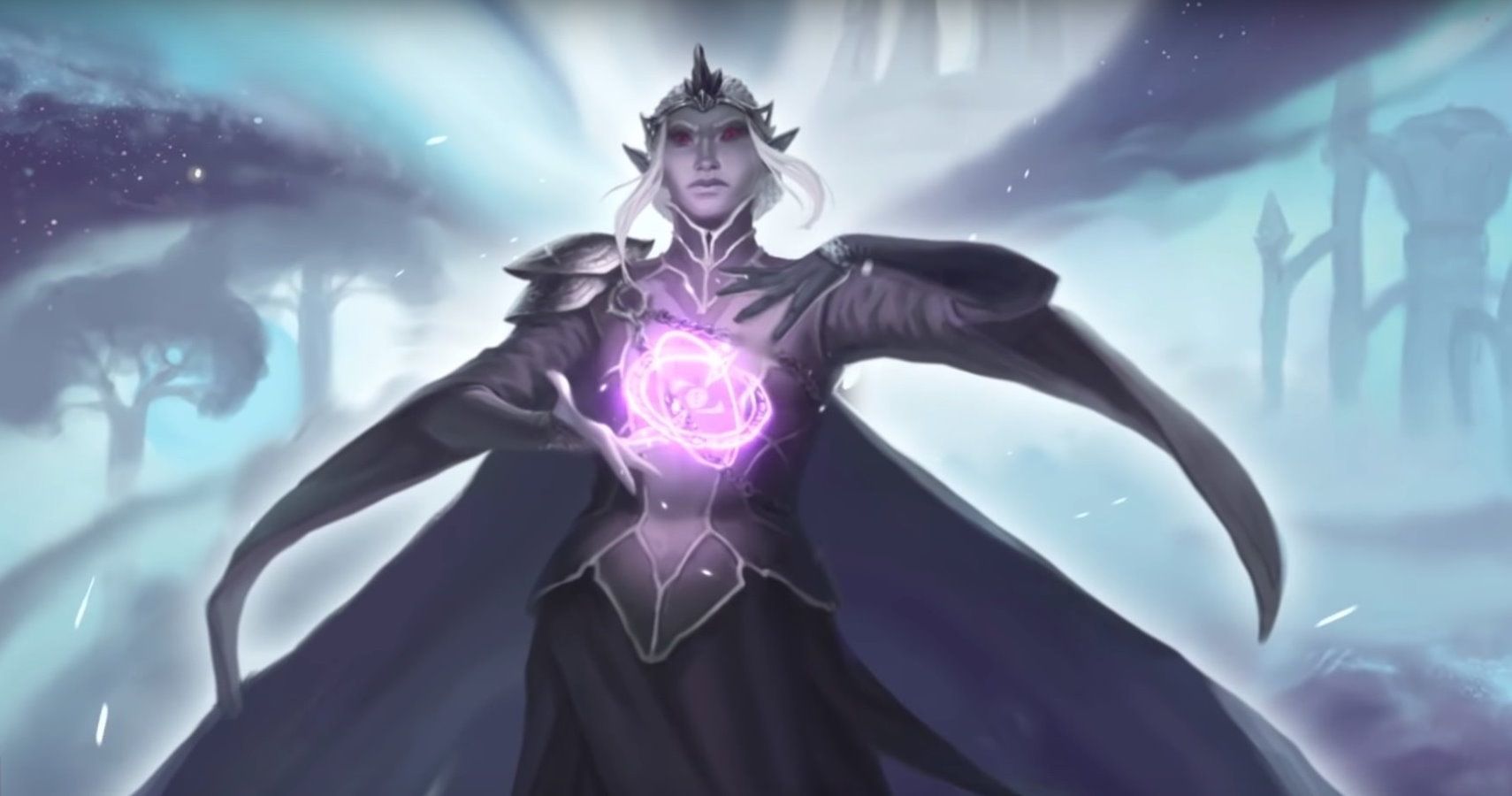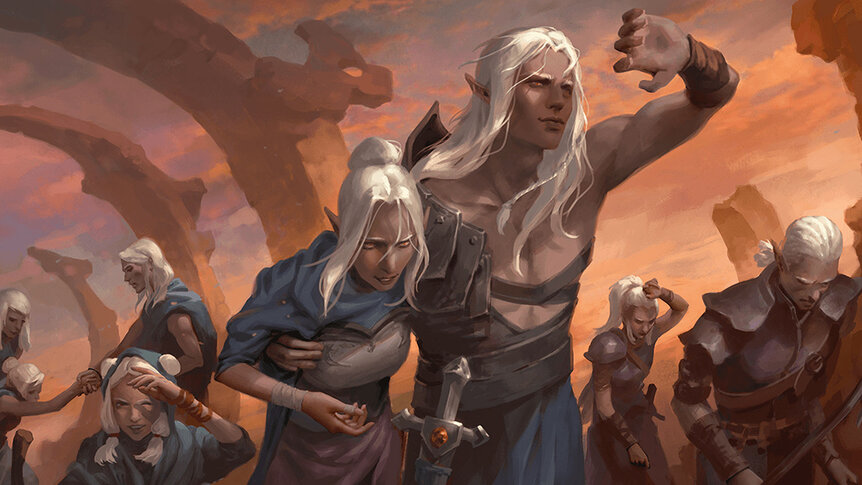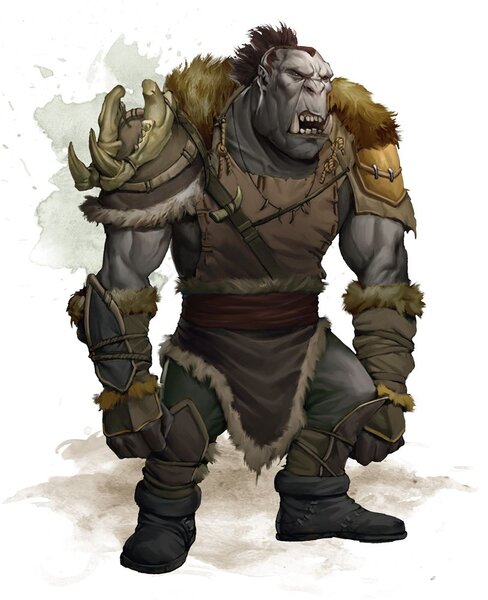Create a free profile to get unlimited access to exclusive videos, sweepstakes, and more!
Dungeons & Dragons' latest setting, Wildemount, helps solve the problem of 'evil' races

Explorer’s Guide to Wildemount, the latest official Dungeons & Dragons campaign setting, adds a lot to the world of D&D. Now you can officially play in the same world as the characters of Critical Role, the hit series in which professional voice actors weave a story by playing D&D live. The new book also adds new subclasses and a new school of magic, Dunamancy. And, perhaps most important, it adds some nuance to one of the most harmful tropes in D&D — and most of fantasy in general, for that matter.
Wildemount, the continent that serves as the setting for the Explorer’s Guide and the second campaign of Critical Role, is a morally gray land dominated by two major powers. The first is the Dwendalian Empire, a militaristic country modeled after 15th-century Eastern Europe that’s populated mostly by humans, with some elves, halflings, and the other “good” D&D races. The other is the Kryn Dynasty, which is located in a wasteland and inhabited mostly by dark elves, orcs, goblins, bugbears, and other “evil” D&D races. However, reading the Explorer’s Guide (and watching Critical Role) will reveal that there’s much, much more to the Dynasty and its people than just an alignment.
“From a lore standpoint, I really enjoyed creating the Kryn Dynasty and presenting a very powerful and prominent society that largely embraces what are considered classically as the monstrous races of D&D,” Matt Mercer, Critical Role’s DM and the primary writer behind the Explorer’s Guide, tells SYFY WIRE. “They are just like any other creatures in the world — trying to survive, trying to get by, trying to work together.”
The Kryn Dynasty is hardly a utopia, but as described in the show (and further fleshed out in the new book), it’s a country of cast-offs and scrappy upstarts who are simply trying to thrive in a world that’s prejudiced toward them. Due in no small part to a religion that allows for souls to be reborn in another body, the Kryn society is race-neutral in a way that’s rarely seen in fantasy lore. It’s borderline progressive, even. Crucially, while there are bad actors among the Kryn, they’re not evil solely because of their race.
Traditionally, that hasn’t been the case for D&D. The Monster Manual is filled with sentient, civilized races who exist mainly for heroic adventuring parties to slaughter. It’s as much an assumed gameplay necessity (players need enemies to fight) as it is a consequence of D&D’s influences. Lord of the Rings, which was a huge inspiration for D&D creators Gary Gygax and Dave Arneson, helped popularize the idea of orcs as a fantasy race that is innately evil. D&D codified it, and although each edition of the tabletop game adds a little more depth, backstory, and flexibility to monstrous races, there’s still an unfortunate implication that some beings are just born bad or less than. Perhaps unsurprisingly, these evil races are frequently described as being ugly and warlike.
“I've fallen into those tropes in the past, too,” Mercer admits. “When you grow up reading Tolkien and Lord of the Rings, most of your fantasy media leans heavily on those tropes of whole groups of people that are just considered evil. It's not until you get older and get to see the more of the world around you and learn from people's experiences that you realize how generally harmful and unhealthy that mindset is.”
It's an important, ongoing, and at times heated conversation. In the weeks after Mercer's interview with SYFY WIRE, the topic went viral again after a Twitter user criticized a passage from the 2016 D&D book Volo's Guide to Monsters, which states that Orcs have only a "limited capacity for empathy, love, and compassion." Others noted that Tolkien's orcs were initially explicitly molded after "Mongol types," and took understandable issue with the idea that codifying an entire race's physical or mental abilities with hard-set stats verges on real-life racist beliefs and pseudoscience. The Twitter user who prompted this renewed conversation about racism and D&D users has since made their account private, perhaps in part because of the ugly backlash that this sort of criticism tends to ignite.
It’s a tricky balance. For players who just want to have a fun adventure fighting some goblins, grappling with the problematic anthropologic racism elements of traditional fantasy isn’t exactly the point. And yet it’s willfully ignorant to pretend that there’s absolutely no downside to normalizing the idea of painting enemies out to be innately evil sub-humans. There’s no perfect solution to this problem, which is baked into the genre’s DNA. With the Kryn Dynasty, at least, Mercer is offering a way for players to add some crucial context and subtlety to their tabletops.
“So while you can deal with absolute evils in campaigns, I'm trying to steer away heavily from the idea of it being based in race or any sort of innate character nature,” Mercer says. “Instead it’s based on their experiences and how they've chosen to live their lives and all their goals. That’s a little more personal, as opposed to just a generalization.”
Listen to our full interview with Matt Mercer by subscribing to SYFY WIRE's Who Won the Week podcast.



























